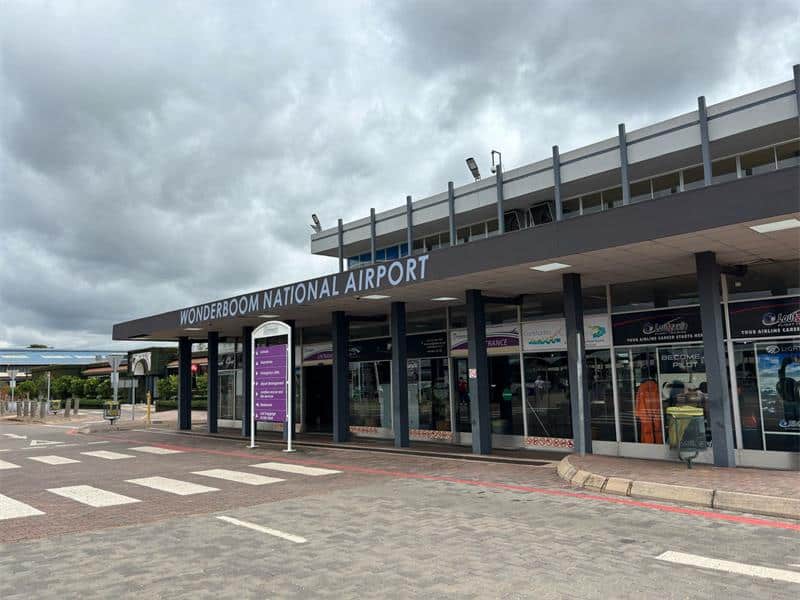Tshwane Metro aims to turn the economy around with its economic revitalization strategy and achieve an annual growth rate of 3.9% by 2029.
As part of its strategy, Metro will focus on underutilized assets led by Wonderboom Airport to create jobs, diversify the economy and attract investment.
Mayor Nasipi Moya said it is important for the subway to reverse economic stagnation.
“Tshwane's economic growth rate was just 0.3% in 2023.
“With this strategy, we aim to not only recover, but to achieve sustainable and inclusive growth,” Moya said.

Considered a long-sleeping giant, Wonderboom Airport is now positioned as a key driver in Metro's growth trajectory.
This strategy outlines the potential to support both cargo and passenger operations, act as a logistic hub, and increase the connectivity of the metro to regional and international markets.
Located in the northern economic sector and within Gauteng province, Zwan offers links to trade, tourism and transportation networks.
By investing in Wonderboom, Metro believes it will open the door for partnerships in aviation training, aerospace maintenance and logistics operations.
“Wonderboom Airport is more than a runway. It is an opportunity runway and, if used correctly, can raise the entire community,” Moya added.
Five of the 18 strategic interventions outlined in the airport's turnaround plan were completed in October 2022, according to Metro spokesman Lindela Masigo.
These include significant milestones, including the recovery of Category 5 licenses at airports that were downgraded to Category 2 in 2019, and a 64% increase in revenue generated between fiscal year 2020/21 and the current fiscal period.
Masigo said this growth shows improvements, especially when seen against airport performance in recent years.
The net loss margin at -230% in 2020/21 has now improved to -69%, indicating a positive trajectory for the fiscal year.
Despite these achievements, the implementation process continues to face hurdles.
Masigo said the metro itself's financial crisis would limit the availability of resources needed for further progress.
The future of Wonderboom Airport relies on the final decision of the airport's master plan, development plan, and precinct pillars, all of which will guide long-term growth and establish a role within local and national air travel networks.
Masigo said these plans are expected to be concluded by December.
“The development of the airport will comply with international aviation standards set by the International Civil Aviation Organization (ICAO) and ensure that environmental sustainability is a priority.
“The operational aspect of the strategy is expected to be completed by fiscal year 2025/26, but fully realising the potential of the airport is a long-term commitment.”
Once confirmed, the master plan will guide the future development of the airport and determine how it will expand, attract new airlines and become a key player in regional and national air travel networks.
In addition to Wonderboom Airport, several other metro-owned assets will be revitalized as part of a broader economic recovery vision.
These include:
– Bon Accord Asphalt Quarry
– Ruwal and Pretoria West Power Station
– Tshwane Fresh Agricultural Market
– Pretoria Showground
– A rejuvenation program for the city center.
Together, these assets form the backbone of economic revitalization strategies, aiming to attract R17 billion to R2.6 billion by 2029 and create jobs for over 80,000 people.
Pretoria sasekamer Chairman Fergus Ferguson said an economic framework for the development of Tshwane is needed.
“The necessary economic framework is to ensure that subways become a world-class economic hub by 2030.
“This ensures that people and investors around the world will invest in Pretoria,” Ferguson said.
He said the economic policy framework will develop elements that will ensure that the subway competes with the best in the world.
“Because there are few learning institutions, Metro is a student-oriented city, and there are training facilities where most people, such as local government workers, are trained here.
“We also believe there are other facilities that can train and develop high-tech companies.”
He said that power generation from assets such as Ruwal and Pretoria West Power Plant could have a major impact on the development of the subway in the next five to ten years.
“Wonderboom airports need to be developed to be a viable facility for training and commodities, not just for people but for goods and training purposes.
“Innovation must be at the top of the list. Tshwane needs innovation. They need to be more proactive in what they are doing.
“Metros can be great when it's innovative. Metro's lack of maintenance seems horrifying.”
This strategy outlines 11 key objectives, ranging from infrastructure development and business ease to innovation, rural development and workforce preparation.
This approach is holistic and designed to not only stimulate economic growth, but also to ensure growth is inclusive.
Partnerships are at the heart of the plan. Metro is actively involved with the private sector, diplomatic missions and investors to bring assets to life.
According to Moya, Metro, the largest municipality in each region in Gauteng, has its own geographic footprint for expansion.
She said the metro is the gateway to the North African market and is within the state that attracts 40% of South Africa's direct investment.
Also Read: Fatal shootout leaves four dead, and two policemen injured
Do you have more information about the story?
Please send an email to bennittb@rekord.co.za Alternatively, call 083 625 4114.
For free breaks and community news, visit the Rekord website: Rekord East
For more news and interesting articles such as Rekord on Facebook, follow us on Twitter, Instagram and Tiktok.
At Caxton, we employ humans to generate fresh daily news rather than AI intervention. Happy reading!


